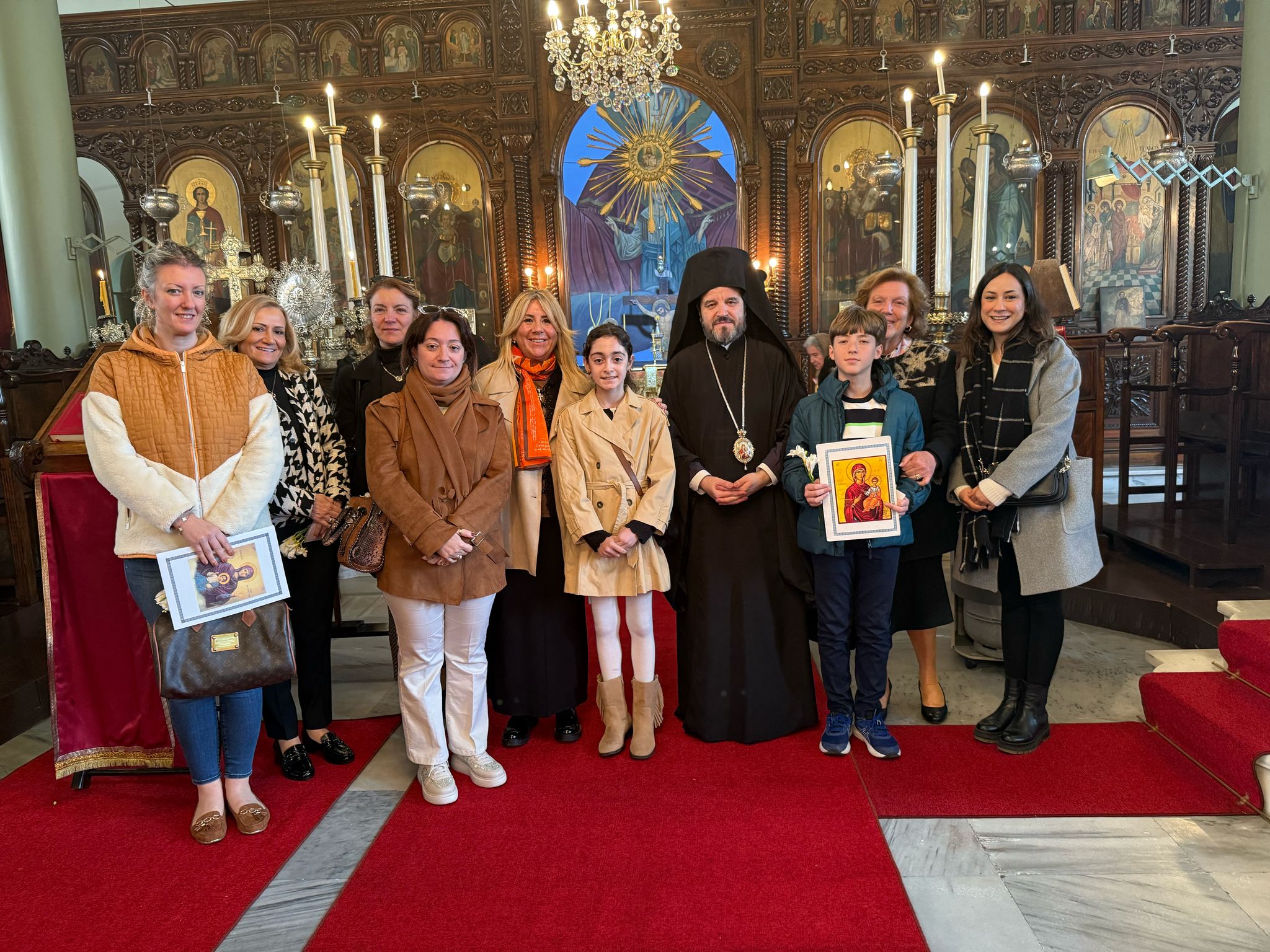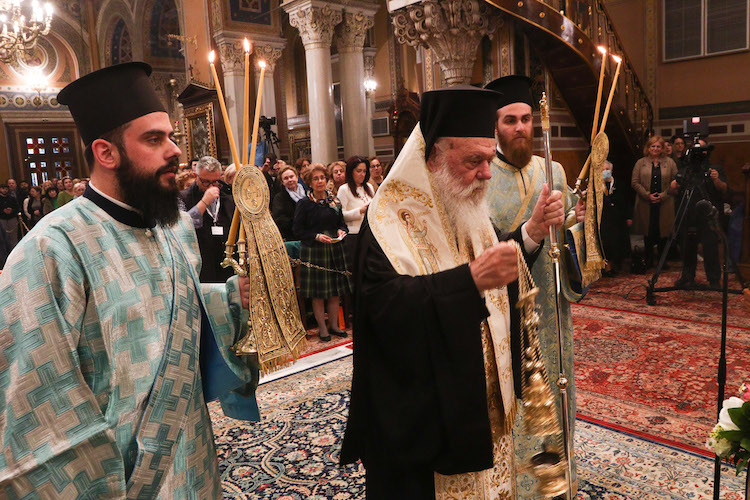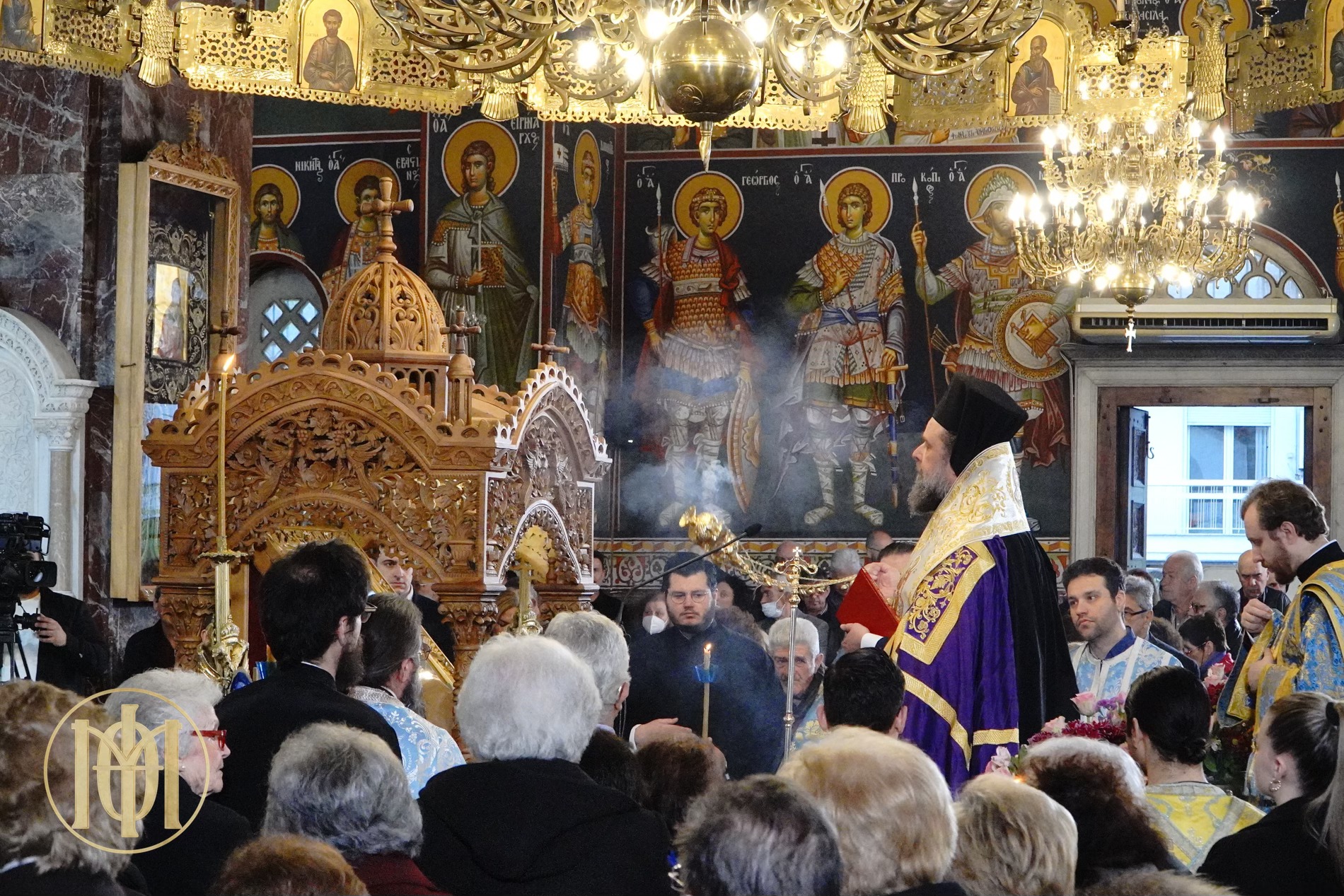Venerable Paul, founder of the Xeropotamou Monastery on Mount Athos (28 July)

Saint Paul of Xeropotamou, in the world Procopius, was the son of the Byzantine Emperor Michael Kuropalatos, who later resigned the imperial office and became a monk in a monastery he built. Having received the finest education, Procopius became one of the most learned men of his time. His “Discourse on the Entrance of the Most Holy Theotokos into the Temple,” the “Canon to the Forty Martyrs”, the “Canon to the Venerable Cross” and other works gained him great renown. But worldly knowledge and honors did not interest him. He exchanged his fine garb for beggar’s rags, and he went to the Holy Mountain [Athos], to Xeropotamou. He built a cell there at the ruins of an old monastery founded by the empress Pulcheria in honor of the Forty Martyrs (March 9). From Cosmas, a hermit, he received monastic tonsure with the name Paul.
Out of humility the saint did not reveal his erudition to anyone. The fame of Paul’s strict life quickly spread throughout the Holy Mountain. He became called Paul of Xeropotamou, and the monastery where he pursued monasticism, to the present day bears the name Xeropotamou (“dry river”).
At that time the emperor Romanus, a relative of Paul, ascended the throne. Through the Protos of the Holy Mountain he requested the saint to come to Constantinople and planned a splendid reception for him. The humble Paul, not betraying his monastic duty, appeared with a cross and in torn robes amid the courtly splendor and magnificence. Saint Paul confirmed his fame as a chosen one of God, miraculously healing the grievously ill Romanus by placing his hand on him. But the vanity of courtly life, promised by the gratitude of the emperor, did not interest the saint; he returned to the Holy Mountain, having asked one favor of the emperor: to restore the Xeropotamou monastery.

In the holy altar in the consecrated cathedral church of the restored monastery, was put a piece of the Venerable Wood of the Life-Creating Cross of the Lord, given to Saint Paul by the emperor Romanus.
Soon the Xeropotamou monastery was filled by a throng of monks, wanting to put themselves under the guidance of the holy ascetic, but Saint Paul, having entrusted the rule of the monastery to one of the brethren, moved off to the remote wilderness. His quiet was again disturbed by disciples, not wanting to leave their Elder. Then the monk requested of the emperor the means for the building of a new monastery. Thus the saint founded a monastery in the name of the holy Great Martyr and Victory-Bearer Saint George. The first head of the new monastery was Saint Paul himself, who also brought a piece of the Venerable Wood of the Cross of the Lord there.
Having been informed in advance by the Lord of his impending end, the saint summoned the brethren of the Xeropotamou and the new Georgikos monasteries and gave them his final instructions. On the day of his death, Saint Paul donned the mantle, and read the prayer of Saint Joannicius, which he said continually: “My hope is the Father, my refuge is the Son, my protection is the Holy Spirit, O Holy Trinity, glory to Thee,” and he received the Holy Mysteries of Christ.
Saint Paul had instructed in his will to bury his body on the peninsula of Pongosa (opposite the Holy Mountain). But by the will of God the ship was driven to the shores of Constantinople, where the Emperor and Patriarch with the pious took the body of the saint and solemnly placed it in the Great Church (Hagia Sophia). After the sacking of Constantinople by the Crusaders, the relics of Saint Paul were transferred to Venice.
Paul was the son of Emperor Michael Kuropalates. Having an excellent education, rare wisdom and meekness, Procopius (as he was first called) was in his youthful years a subject of astonishment to all of Constantinople. In one of his charters, Emperor Romanus the Elder,called him “the greatest of all the philosophers.” Being afraid that his soul would become proud, and desiring that it not perish because of human glory, this brilliant youth dressed in the rags of a beggar and went to Holy Mount Athos, where he received the monastic tonsure from the illustrious Saint Cosmas. After a long period of solitary monastic labor he restored the Monastery Xeropotamou, and shortly after that built the new Monastery of Saint Paul, where he died in old age.
When this monastery was consecrated, Emperor Romanus sent a large portion of the Holy and Venerable Cross as a gift, which is preserved there even to this day. It is said that he preached the Holy Gospel in Macedonia and in Serbia. He endured much torment from the wicked iconoclastic Emperor Leo the Armenian, and reposed in the year 820 A.D. At the time of his death, St. Paul said to the brethren: “Behold, the hour comes that my soul has always desired, and which my body has always feared.”
Source: oca.org / westserbdio.org





